This will be a backyard blog short on photos, but the one we have are some good ones. My family and I went on an epic three week road trip to Colorado, where we camped in four different National Parks. So we weren’t in the yard. Still, there was plenty to see when we got back, and July will be a mammoth entry.
While we were on vacation…
I won’t bore you with every plant, animal, and lichen I iNaturalized while on vacation. But there was one critter I did want to highlight:
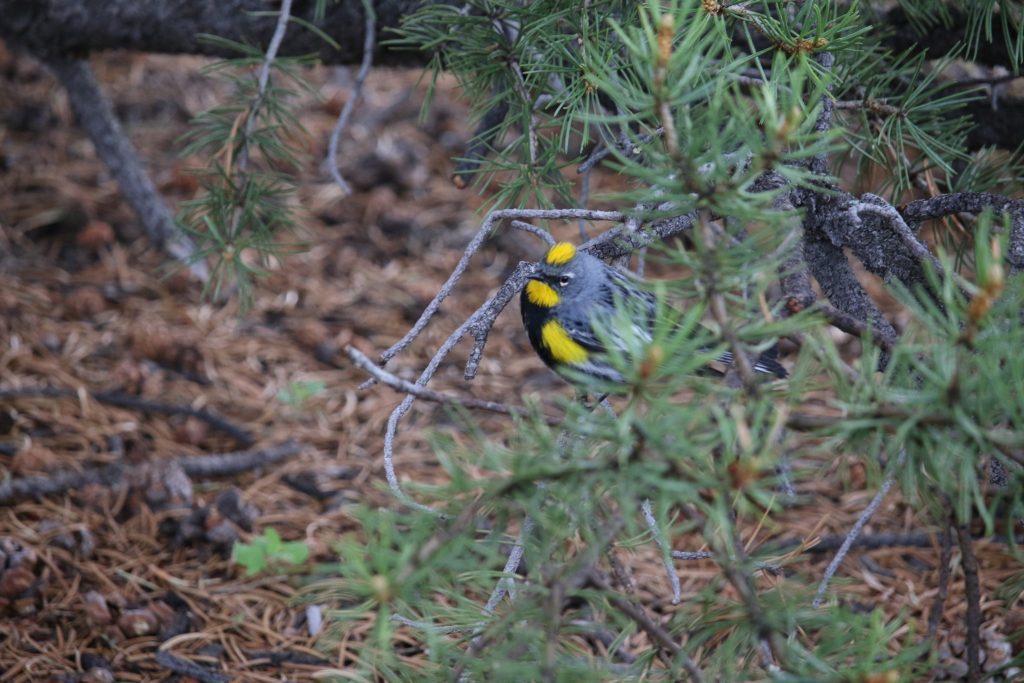
I photographed this bird at Great Sand Dunes National Park. It’s a species that visits my yard every winter, but here in its summer plumage. This is the yellow-rumped warbler, a common sight in Tallahassee during the winter migratory season. Since birds tend to breed during the summer months, this is when many species have much more colorful plumage. When we see them in the colder months in Florida, they tend to be duller and greyer.
Speaking of breeding…
A few days after we returned, I saw our first black swallowtail eggs of the year:
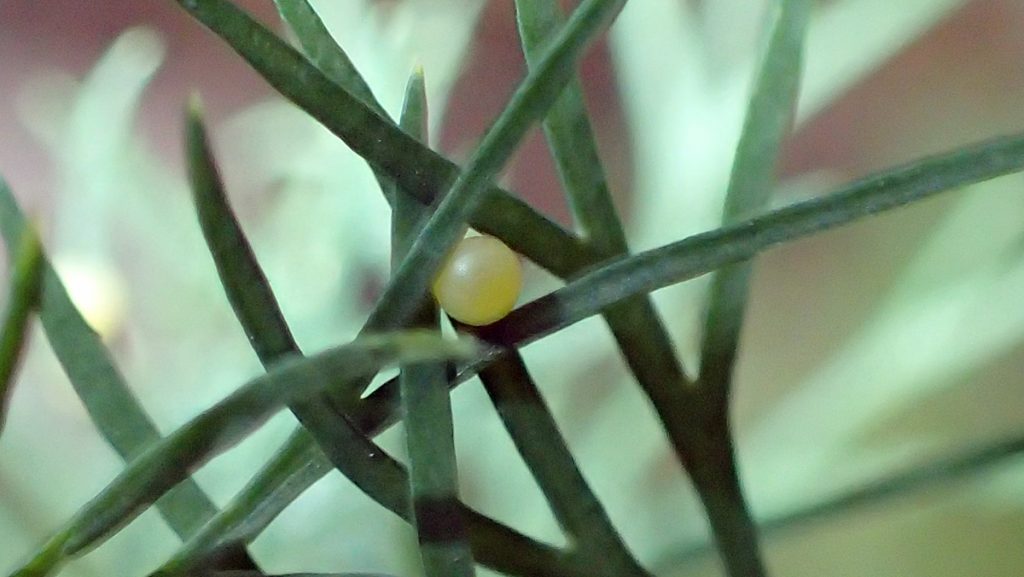
We had three eggs on fennel and dill plants. Within a couple of days, I saw first instar caterpillars eating those eggs. If you haven’t see it yet, we took a year’s worth of black swallowtail caterpillar footage to make a video on their life cycle.
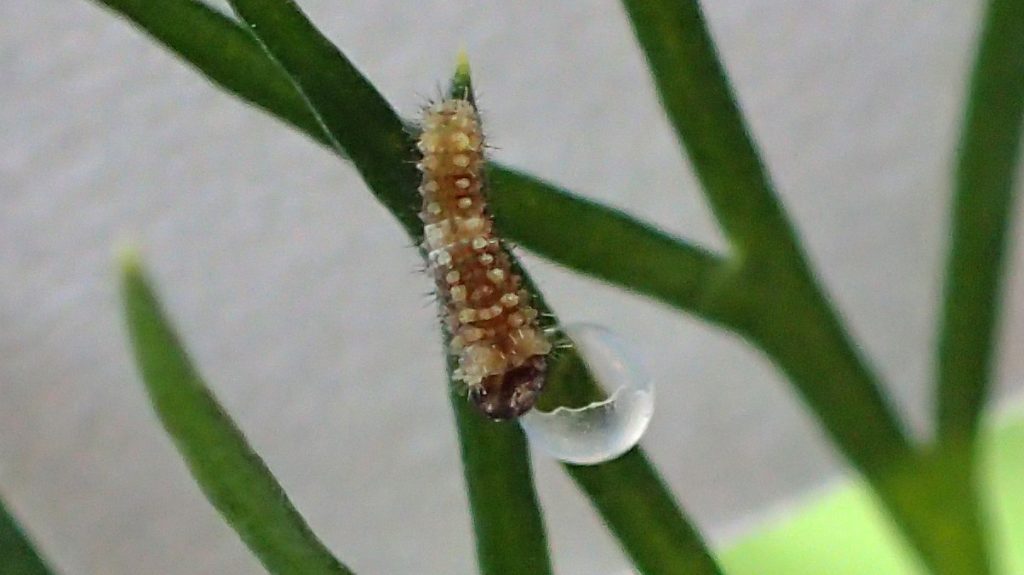
Meanwhile, we had a new wave of monarchs. Here’s one just after molting its skin.
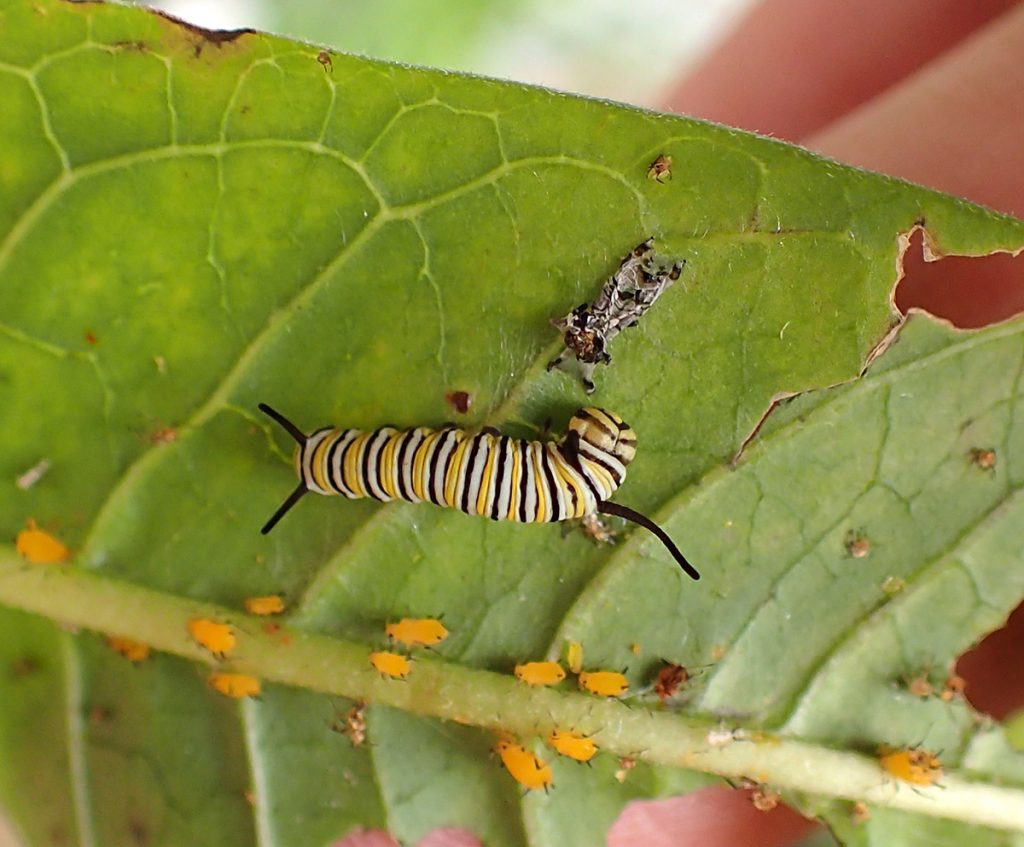
They molt between every instar stage, eating the skin afterwards. As you can see, while we were gone, the milkweed aphids got out of hand. Luckily, that attracted their predator:
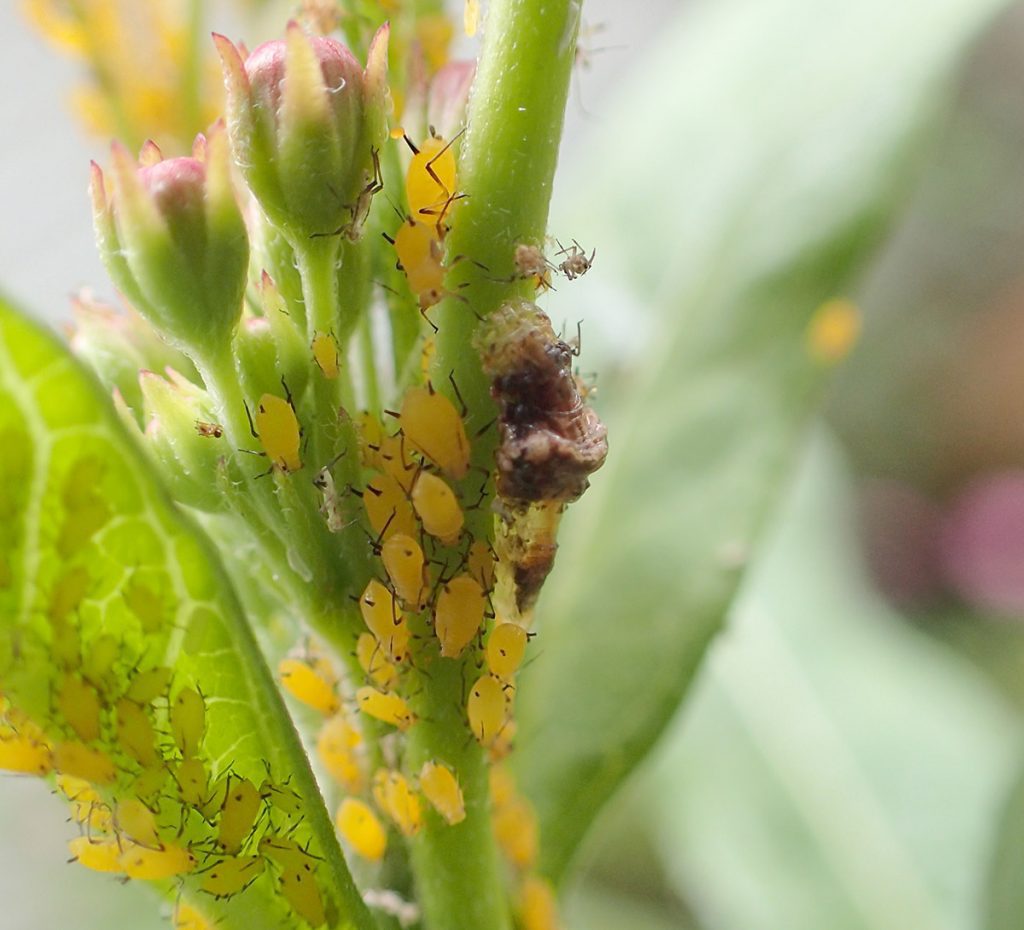
I’ve had my worries about whether syrphid larvae eat monarchs as well as aphids. It led me to research monarch predators, which I wrote about a couple of years ago. I learned a lot about other insects, often beneficial insects, that predate monarchs. But syrphids seem harmless to our caterpillars. But I still watch them. After all, they can stomach critters that eat toxic milkweed.
Using iNaturalist in the yard, I’ve learned more about the hoverflies they grow into. We have several species of these bee mimics in the yard, and they’re busy pollinators. They are fascinating animals.
And lastly…
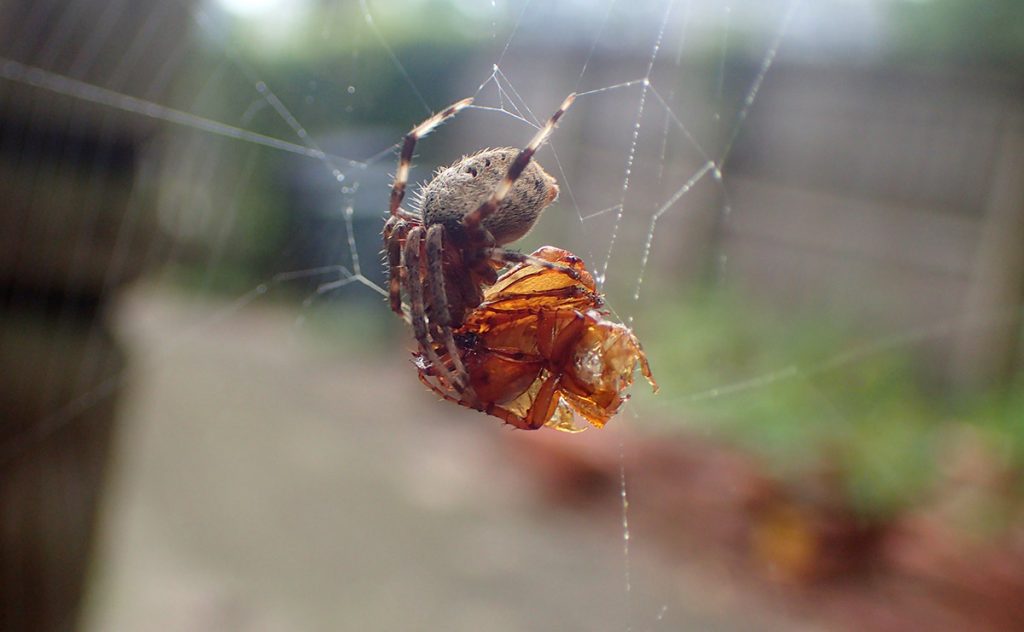
The image above was snapped on June 28. If you scroll to June 21 on the 2018 Backyard Blog, you’ll see an image of the same species of spider eating the same species of June beetle. I guess it makes sense that this is a reliable food source during this month of the year.
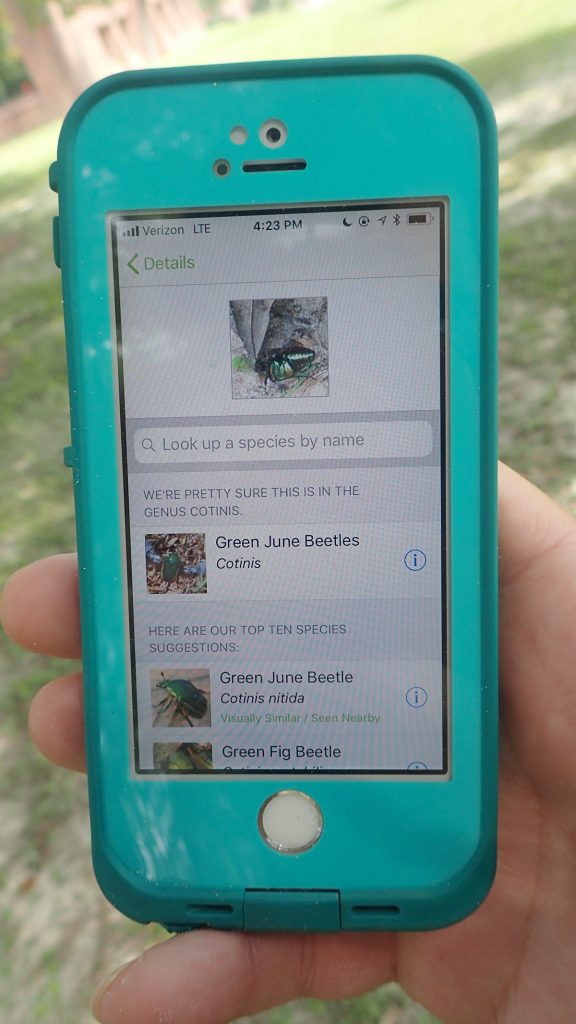
Apps and Citizen Science mentioned in the Backyard Blog
iNaturalist
Identify plants, animals, lichens, and fungi in your yard. Other users correct your identifications if you’re wrong, and even if they don’t, it can be a good springboard to further research.
Seek by iNaturalist
Instant identification, and it doesn’t record your location. This is a good option for kids with phones.
Monarch Larva Monitoring Project
Enter information about monarch caterpillars in your yard, and help researchers get a sense of the health of the monarch population that year, and how and when they’re migrating.
Great Sunflower Project
Record the number of pollinators visiting your flowers, and help researchers map pollinator activity across the country.
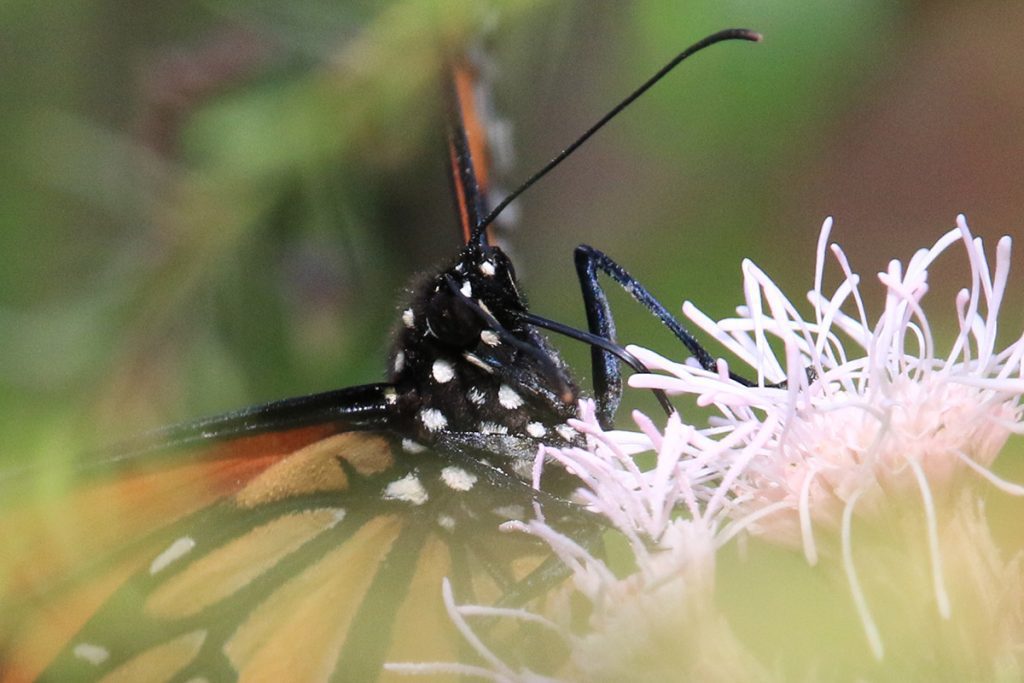
Dig Deeper into Backyard Ecology
What can we do to invite butterflies, birds, and other wildlife into our yards? And what about the flora and fauna that makes its way into our yards; the weeds, insects, and other critters that create the home ecosystem? WFSU Ecology Blog takes a closer look.

